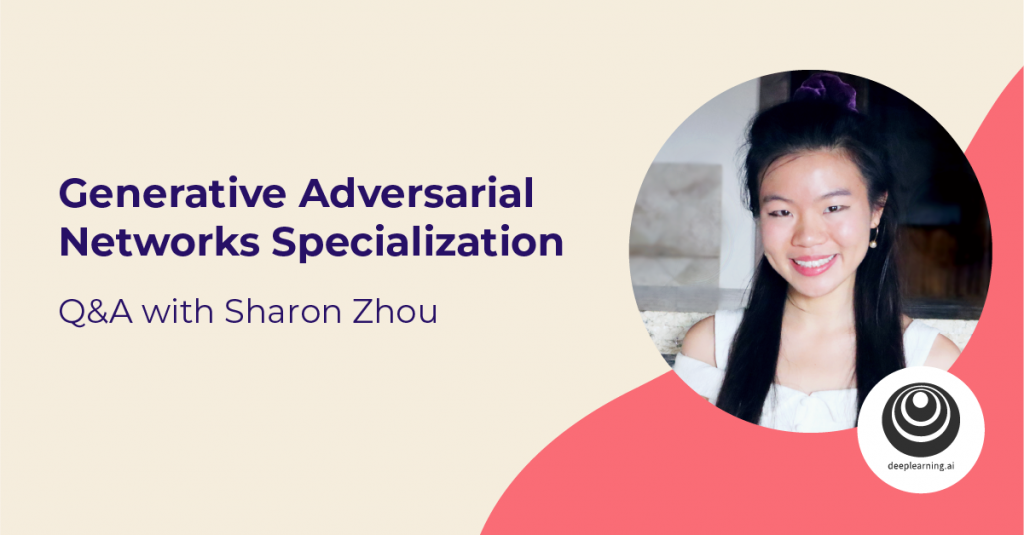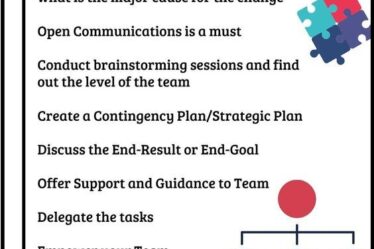

Sharon Zhou is the instructor for the new Generative Adversarial Networks (GANs) Specialization by DeepLearning.AI. This intermediate-level, three-course Specialization helps learners develop deep learning techniques to build powerful GANs models. Sharon is a CS PhD candidate at Stanford University, advised by Andrew Ng. Sharon’s work in AI spans from the theoretical to the applied — in medicine, climate, and more broadly, social good.
How did you become interested in AI, namely GANs, and teaching others about it?
I enjoy optimizing for efficiency, but also powering through menial tasks, so AI and I seemed to have that in common. As I scanned through arXiv papers, I was mesmerized when I saw the outputs generated by GANs. My first project was with my friend and mentor, Kamyar Azizzadenesheli, who was advised by Anima Anandkumar. I still like humans more than AI, but GANs hold a special place in my heart!
How would you define Generative Adversarial Networks (GANs)?
Generative: You might have come across discriminative models like classifiers that try to differentiate between, say, types of pizza. Generative models, on the other hand, would characterize existentially what is a pizza, really? That is, how often pepperonis occur on a pizza, how often pizzas are calzones (never!). Generative models thus have a harder task than discriminative models, which is why you should be nice to your GAN and feed it better GPUs!
Adversarial: Two models, called the generator and the discriminator, optimize for opposite goals in a GAN: the generator tries to generate realistic objects to fool the discriminator, and the discriminator tries to determine whether the outputs are real enough. This battle continues until the generator can produce realistic outputs that you and I admire.
Network: GANs are neural networks.
How do you foresee the GANs landscape evolving over the next few years? Which industries are likely to be impacted?
With GANs, realistic generation can drastically reduce the gap between simulation and reality, which would improve generalization a thousand fold across models in all machine learning paradigms. I’m also excited to see the emergence of hybrid models, because different types of models have different strengths. Multimodality is exciting too, because the world isn’t just images, just text, or just audio – in fact, with various sensors, we can have greater sensory depth than what we as humans naturally see, hear, feel, smell, or touch.
The most obvious industries to utilize GANs would be image editing – Photoshop 2.0 and Snapchat filters will continue to improve – as will retail where we have visual choices (like trying on clothes, makeup, or the placement of furniture). Architects might use a GAN to show officials how their city will look with a new bridge or park.
What GANs applications most excite you?
I’m excited about areas where GANs can be used for good:
Climate change: I recently worked with Turing Laureate Yoshua Bengio and his team on a project, where we used a GAN to generate different flood scenarios from street view images. What would your neighborhood look like under projected sea-level rise in five years? We called these visceralizations since they were both visual and prompted a visceral reaction.
Medicine: Medical data in particular can be difficult to acquire and sensitive to release, so GANs can help augment rare classes (like cancer). I also foresee GANs enabling accurate previews of expensive, time-consuming, or radiation-inducing medical examinations, leading to better patient care and management in healthcare systems worldwide.
Story-telling: Stories are a powerful medium for conveying information and influencing perspectives. I’m excited to see how GANs can generate Hollywood movies from a screenplay, or illustrations from a child telling her own bedtime story.
Who in AI inspires you? What are the most important conversations happening in ethical AI?
I’m inspired by the courage and intelligence of Adji Dieng, a pioneer in so many ways for women and people of color as the first black female professor of computer science in the Ivy League. Timnit Gebru’s work is foundational to understanding why we should interleave ethics with building AI. Anima Anandkumar, who joined us for the launch of this Specialization, is also an inspiration to me, as she exposes gender bias where it remains otherwise unchallenged. Finally, I co-host a podcast in the Stanford AI Lab with my friend Andrey Kurenkov, who inspires me everyday, as we demystify new AI work and provide ethical commentary on new AI products.
Without ethics in AI, certain people might not consider entering the field and others might be pushed out of it. Our Specialization covers bias in both ML at large and in GANs specifically. I very intentionally want this discussion to be interlaced with technical components. Evaluation is not just about how good your model is, it’s also about how you define “good.”
Why was this Specialization created and what was your role in creating it?
GANs and their amazing applications are growing by the day and yet, resources for learning about them are siloed. I had built my own knowledge by putting discrete concepts together and reading dense papers. This Specialization, thus, provides comprehensive educational materials to equip you with the tools to build your own GANs and dive deeper into advanced research. I’ve endeavored to create a cohesive, accessible, and engaging learning environment – what I would’ve wanted for myself when I was breaking into this space.
Who is the ideal learner for the Specialization? What should learners know prior to taking it?
There are three main target learner groups in the GANs Specialization:
- Technical: software engineers, data scientists, AI students, ML practitioners
- Business: entrepreneurs, product managers, venture capitalists, analysts
- Artistic: artists, content creators, marketers
I also hope to see students from fields such as medicine, physics, history, biology, film, etc. take this technology and run with their creativity and understanding of issues in their fields. In addition to CS, I was a Classics major at Harvard and was happy to recently see a cool GAN that brought Roman emperors to life. So get curious and keep exploring. You’ll eventually find the cup of tea that you’ll want to continue brewing!
Learners should have some experience with basic deep learning concepts and Python programming. This is covered in the Deep Learning Specialization.
Get started by enrolling in the Generative Adversarial Networks (GANs) Specialization today.
9

